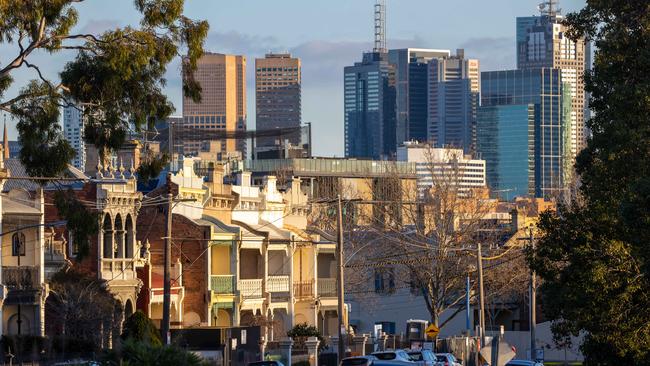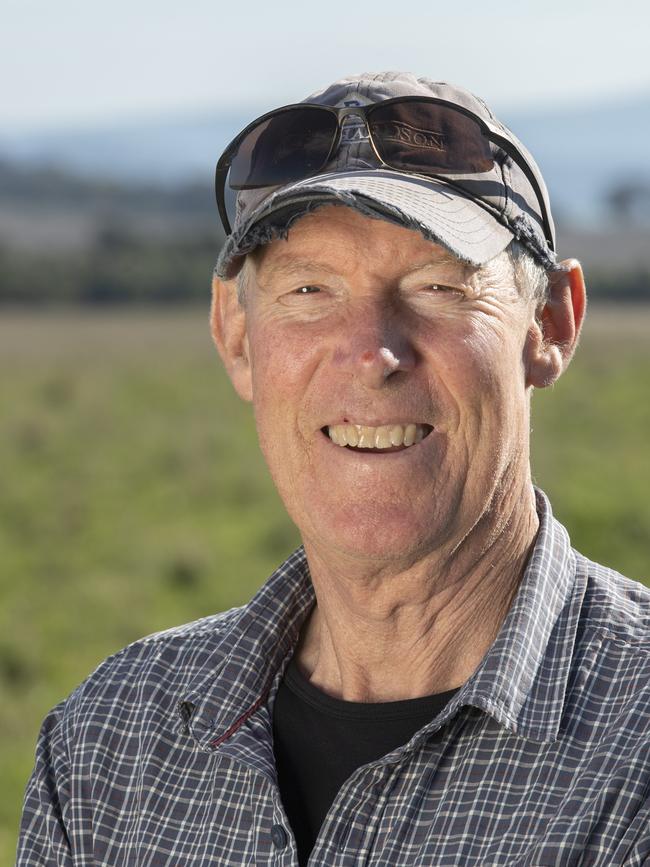Victoria’s councils to be thousands short of new home building targets, fear taxes will scare off developers
Victoria’s municipal association president has warned property taxes risk scaring off developers even as figures reveal councils are on track to miss new housing targets by up to 85,000 homes.

Property
Don't miss out on the headlines from Property. Followed categories will be added to My News.
Victoria is on track to fall more than a million homes short of a 2.5 million new residences construction target announced by the state government last week.
Analysis of housing approvals across the state’s council areas shows 65 will miss their new 2051 goals unless they can change trajectory from today’s numbers, with just 15 on track to reach or exceed their figures — headed by the Melbourne fringe municipality Casey.
It comes as Municipal Association of Victoria president David Clark has flagged concerns levies ranging from recently increased land tax to the contentious Windfall Gains Tax could cost the state “the people who have been driving development up to now”.
RELATED: Boroondara Council lashes Allan government’s ‘unrealistic’ housing plan
Victorian apartment approvals plunge to 17-year low, house approvals stuck in doldrums
Victorian state budget: Industry ‘deeply concerned’ by lack of housing initiatives

Australian Bureau of Statistics figures for new residential approvals from this financial year’s start to April’s end, extrapolated to a full year, shows Victoria should approve about 51,000 new homes this financial year.
If that figure was repeated through to 2051, the state would green light fewer than 1.381 million new homes — about 56 per cent of the 2.46 million the government is seeking.
Even at the 10-year average of 64,000 homes, which is heavily buoyed by the HomeBuilder boom instigated by the federal government and Melbourne’s last apartment boom, the state would only approve a further 1.728m new homes.
Housing Industry Association Victorian executive director Keith Ryan said the numbers showed the government would need to make a several changes to give the targets a chance, ranging from altering planning and tax policies.

“But remember, homes get built not because the government says they want them built, but because a consumer says I want one,” Mr Ryan said.
But finding the developers willing to create that many new homes could be a challenge, with Municipal Association of Victoria president David Clark warning the state’s high taxes had councils worried developers would go elsewhere.
“Some of it is in the situation, statewide, where the imposts for developers are starting to get so significant that it becomes problematic,” Mr Clark said.
“There’s a nervousness that we could lose the people who have been driving development up to now.”
He added that mum and dad investors who might have planned to hold onto an industrial or commercial property long term and then seek to rezone it for housing could also be dissuaded by the Windfall Gains Tax.
“There’s a risk that there will be a lot less of them in the market,” Mr Clark said.
“And one of the real challenges becomes where the capital to do the development we need comes from. You don’t want to be knocking people out with tax.”
The MAV president said for the most part there hadn’t been uproar over the figures, but councils around the state were now looking to the “next part of the equation, around how do we get the money in the system”.
Mr Clark added that they were currently seeking to meet with development industry members to identify where they could do better, and was even looking at ways to facilitate a group of homeowners to team up with developers in joint ventures that could create densification.

Even in Casey, the council poised to top its targets by 25,000 on current approval numbers, development industry heavyweights have flagged concerns there is not currently enough land gazetted to reach their goals.
Moremac chief executive Tom Trevaskis’ firm has multiple projects underway in the municipality, where he said developers were funding a dedicated council team to assess urban growth area planning, rather than having applications assessed by regular planners with less experience in the space.
“They don’t have a 15-year supply set up at the moment … if that doesn’t happen, the demand will continue but the supply will reduce and that will put greater pressure on prices,” Mr Trevaskis said.
Also the Urban Development Institute of Australia Victorian president, the developer said while the state government had a plan to deliver 70 per cent of new homes as townhouses and apartments at in-fill development sites, the numbers showed buyers preferred the urban fringe — in line with historic approvals data that showed closer to a 50-50 split.
“It is the greenfield areas that are doing the heavy lifting,” Mr Trevaskis said.

He flagged concerns over the Windfall Gains Tax, which he said could stifle development as it was often unclear how much it would cost developers — leading those considering projects to load them with extra costing and making it harder for the numbers to stack up and creating a “non-level playing field” with urban growth area development that is subject to a fixed Growth Area Infrastructure Contribution fee.
Metricon sales and marketing general manager Drew Glascott said while family homes remained popular today, the building giant foresaw townhouses increasingly taking the mantle in the future.
Victoria and Australia’s biggest home builder, Metricon is still noting a high preference for new homes to be built on the urban fringe.
Many families prefer these regions for their larger housing options, affordability, and ample outdoor space, which creates an ideal blend of indoor and outdoor living,” Mr Glascott said.
Sign up to the Herald Sun Weekly Real Estate Update. Click here to get the latest Victorian property market news delivered direct to your inbox.
MORE: Jawdropping mortgagee sales now on the market
Melbourne school leavers could face 21-year wait to buy a house | Finder
Epic Leopold property with motocross track is thrillseeker’s paradise
Originally published as Victoria’s councils to be thousands short of new home building targets, fear taxes will scare off developers


